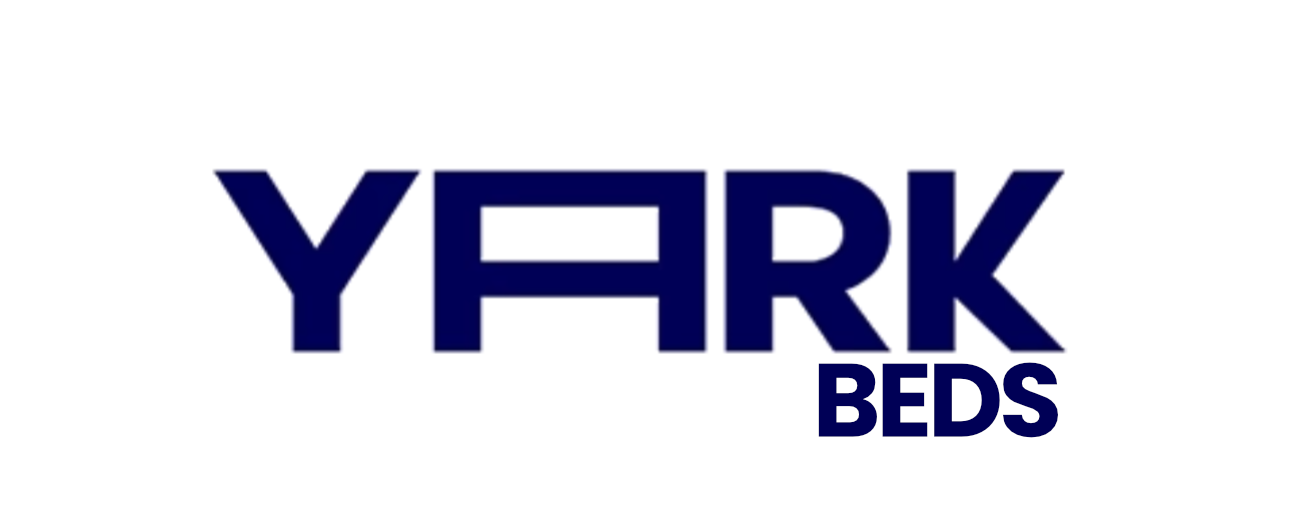SR5 (Sunderland)
Sunderland (SR5) Postcode Area
Sunderland, on the northeast coast of England, offers a coastal lifestyle with a rich industrial heritage. Residents enjoy easy access to stunning beaches, including the popular Roker and Seaburn, alongside a burgeoning arts scene highlighted by the National Glass Centre. With excellent transport links via the Metro and train services, commuting is a breeze. The city boasts a variety of amenities, from shopping at The Bridges to beautiful parks, making it a welcoming community for individuals and families alike.
Overview
Sunderland (SR5) postcode district is located in the ceremonial county of Tyne and Wear, and is part of the Sunderland postal town.
SR5 is a postcode in Sunderland, County Durham, known for its affordable housing and vibrant community. The average house price is £69,000, significantly lower than the UK average of £288,000. The area has a population density of 1059.3 people per sq km, and a crime rank of 1816/32482, indicating a relatively safe environment. With 40.3% of homes being socially rented, it caters to a diverse demographic, including a high percentage of single residents at 44.1%.
Settlements within SR5 include:
Carley Hill, Castletown, Downhill, Fulwell, High Southwick, Hylton Castle, Hylton Red House, Marley Pots, Witherwack
People and Demographics
Demographics
The SR5 postcode has a predominantly white population, with 97.8% identifying as White. The average age of residents is 40.7 years, aligning with the UK average. The education levels show that 28.4% of the population have no qualifications, while 17.1% hold Level 4 qualifications or higher. This suggests a mix of educational backgrounds, which may influence the local job market and community engagement.
Unemployment
Percentage of people in Sunderland SR5 who are classed as being unemployed at Census 2021.
An unemployment rate of 5% in Sunderland SR5 is slightly above the UK average of 4.3%, indicating a moderate level of joblessness.
While some residents may face employment challenges, the rate still suggests a functioning local economy. Efforts to boost job opportunities could further enhance community stability and support the area's long-term growth.
Diversity
Percentage of residents in the SR5 postcode region who identify as white.
With 96% of Sunderland SR5 residents identifying as White, this postcode has a predominantly homogenous population with limited ethnic diversity.
While the community shares common traditions and cultural practices, efforts to promote inclusivity and cultural awareness can further enhance neighbourhood cohesion and enrich residents' experiences.
Population Growth
Population growth means that the population of Sunderland SR5 is increasing by 0.5% each year.
Across the UK, (England, Scotland, Northern Ireland and Wales), the average population grown from 2023-2024 is 0.66%.
Children
Are under 18 years old
18% of Sunderland SR5 are under the age of 18 at the time of the Census 2021.
Sunderland SR5 aligns closely with the UK average of 17.4%. This indicates a balanced mix of families and other household types, with amenities catering to both children and adults.
Retired
Are enjoying retirement
10% of Sunderland SR5 are retired at the time of the Census 2021.
Sunderland SR5 postcode likely has a younger, more active population. The area may be bustling with professionals, families, and students, with plenty of services and amenities for working-age individuals.
Census 2021 Demographics
Who lives and works in SR5?
Analysing the SR5 population's characteristics, including age distribution and cultural diversity, provides valuable insights into the composition of the community.
Population
Analysing the SR5 population's characteristics, including age distribution and cultural diversity provides valuable insights into the composition of a local community.
Demographics
The SR5 postcode has a predominantly white population, with 97.8% identifying as White. The average age of residents is 40.7 years, aligning with the UK average. The education levels show that 28.4% of the population have no qualifications, while 17.1% hold Level 4 qualifications or higher. This suggests a mix of educational backgrounds, which may influence the local job market and community engagement.
Population Growth
Population growth means that the population of Sunderland SR5 is increasing by 0.5% each year.
Across the UK, (England, Scotland, Northern Ireland and Wales), the average population grown from 2023-2024 is 0.66%.
Children
of Sunderland SR5 are under the age of 18 at the time of the Census 2021.
Retired
of Sunderland SR5 are retired at the time of the Census 2021.
Gender Ratio
51% female
Gender ratio in census data means the number of males for every 100 females in a population, helping us understand the balance between men and women in a specific area.
Age Distribution
are adults
Age distribution refers to how different age groups are spread within a population, showing the number of people in each age range. This helps understand the population's structure and potential needs.
Age Distribution
"Age Distribution by 5-year bands" in the Census 2021 breaks down the population into groups based on age ranges, each spanning five years (e.g., 0-4, 5-9, 10-14, etc.). This helps to see how many people fall into each age group, providing a clear picture of the age structure in an area.
Living Arrangements
"Living Arrangements" in the Census 2021 refers to people's relationship status and how they live with others. It includes whether someone is married, in a civil partnership, cohabiting as a couple, separated, divorced, or single, and whether they live with a partner, alone, or with others.
Legal Partnership
Legal partnership status of residents in the Sunderland (SR5) district, offering insights into the diversity of relationship statuses in the area. This dataset classifies residents aged 16+ in England & Wales by their partnership status.
Gender Identity
"Gender Identity" in the Census 2021 refers to how people personally identify their gender, which may or may not align with the sex they were assigned at birth. It includes options like male, female, non-binary, or other identities, reflecting how individuals see themselves.
Postcodes
Dig even deeper into the SR5 postcode:
Click on an postal code below for more information about the area. Each postcode give you a comprehensive overview of the postcode neighbourhood, including address, demographics, crime, transport, amenities and house prices in Sunderland (SR5).
Word Cloud for SR5
We've trawled social media and the web to discover words that describe the postcode district of SR5:
Nearby Towns & Cities
SR5 Postcode area
The following towns and villages can be found close to Sunderland SR5:
Sunderland
Population 174,286
2.8 miles
Originally a major centre for the trading of coal and sale, Sunderland grew rapidly until the late 20th century, and is now an important centre for the automotive, science and technology industries.
Nearest Postcode Areas:
Cleadon
Population 4,508
3.8 miles
Cleadon, a village in Tyne and Wear, offers a peaceful retreat with its picturesque countryside, historic buildings, and close-knit community, making it an ideal place for those seeking a tranquil and charming setting to call home in the North East of England.
Nearest Postcode Areas:
Seaham
Population 22,373
4.6 miles
Located in County Durham, Seaham is a charming coastal town with stunning beaches, a rich coal mining history, and a vibrant community spirit that makes it a wonderful place to call home for those seeking a peaceful seaside lifestyle with easy access to nearby cities.
Nearest Postcode Areas:
South Shields
Population 75,337
6 miles
A coastal town at the entrance to the River Tyne, South Shields is located around 4 miles south of Newcastle. With a population of 75,337, the town is the third largest in Tyneside after Newcastle and Gateshead.
Nearest Postcode Areas:
Fence Houses
Population 6,649
6.6 miles
Located in County Durham, Fence Houses is a charming village with a strong sense of community, offering easy access to both countryside and city life, making it an ideal place for families looking for a peaceful yet convenient location to call home.
Nearest Postcode Areas:
Jarrow
Population 43,431
6.7 miles
With its rich industrial heritage, stunning riverside views and strong community spirit, Jarrow offers a welcoming atmosphere for residents looking to immerse themselves in a town full of charm and history.
Nearest Postcode Areas:
Bournmoor
Population 2,082
6.7 miles
Bournmoor, located in County Durham, boasts a close-knit community with a peaceful atmosphere, a picturesque village green, and easy access to nearby cities for those seeking a quiet retreat with city convenience.
Nearest Postcode Areas:
South Hetton
Population 3,032
7.4 miles
South Hetton, located in County Durham, is a tight-knit community with a rich mining history, offering a peaceful and family-friendly atmosphere perfect for those seeking a quiet and close-knit village life in the North East of England.
Nearest Postcode Areas:
Local Authorities
SR5 Postal Town
The SR5 postcode includes the following local authorities:
- South Tyneside
- Sunderland
Crime in SR5
How safe is this postcode sector?
The SR1 postcode area, which covers Sunderland city centre, has seen a recent increase in crime levels, with key hotspots including the High Street and Park Lane areas. According to recent statistics, there have been a rise in incidents of anti-social behaviour, theft, and drug-related offenses in the area.
Key Hotspots
High Street and Park Lane are two key hotspots in the SR1 postcode area where crime levels have been on the rise. These areas are known for a high number of shops, bars, and restaurants, making them popular locations for both residents and visitors.
Historical Crime Issues
In the past, the SR1 postcode area has faced historical crime issues such as gang-related violence and vandalism. These issues have been a challenge for local authorities and police in maintaining peace and order in the community.
Current Policing Priorities
The local police force in the SR1 postcode area has set priorities to tackle the recent increase in crime levels. These priorities include increasing patrols in key hotspots, working closely with community groups to address underlying issues, and implementing crime prevention strategies.
the SR1 postcode area is working towards reducing crime levels and creating a safer environment for residents and visitors alike.
Sources:
Police UK,
Sunderland City Council.
The SR1 postcode area, which covers Sunderland city centre, has seen a recent increase in crime levels, with key hotspots including the High Street and Park Lane areas. According to recent statistics, there have been a rise in incidents of anti-social behaviour, theft, and drug-related offenses in the area.
Key Hotspots
High Street and Park Lane are two key hotspots in the SR1 postcode area where crime levels have been on the rise. These areas are known for a high number of shops, bars, and restaurants, making them popular locations for both residents and visitors.
Historical Crime Issues
In the past, the SR1 postcode area has faced historical crime issues such as gang-related violence and vandalism. These issues have been a challenge for local authorities and police in maintaining peace and order in the community.
Current Policing Priorities
The local police force in the SR1 postcode area has set priorities to tackle the recent increase in crime levels. These priorities include increasing patrols in key hotspots, working closely with community groups to address underlying issues, and implementing crime prevention strategies.
the SR1 postcode area is working towards reducing crime levels and creating a safer environment for residents and visitors alike.
Sources: Police UK, Sunderland City Council.
Education
Highest Rated Schools in SR5
As rated by Ofsted
- Bexhill Academy
Bexhill Road, Sunderland, SR5 4PJ
Outstanding - Harry Watts Academy
Ramillies Road, Sunderland, SR5 5JA
Outstanding - Grange Park Primary School
Swan Street, Sunderland, SR5 1EA
Good - Southwick Community Primary School
Shakespeare Street, Sunderland, SR5 2JX
Good - Castle View Enterprise Academy
Cartwright Road, Sunderland, SR5 3DX
Good - Castletown Primary School
Grange Road, Sunderland, SR5 3EQ
Good - Northern Saints CofE Voluntary Aided Primary School
Rotherham Road, Sunderland, SR5 5QL
Good - Hylton Castle Primary School
Caithness Road, Sunderland, SR5 3RE
Good - Town End Academy
Borodin Avenue, Sunderland, SR5 4NX
Good - Willow Wood Community Primary School
Redcar Road, Sunderland, SR5 5AU
Good

Unlock the full power of postcode insights.
Data is meaningless without context. Reveal the stories behind a neighbourhood, and make smarter decisions with data you can trust. Gain unlimited access to detailed statistics, exclusive reports, and essential tools.
PostcodeArea is grateful to our sponsors for their support.






